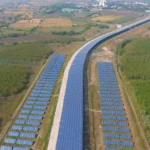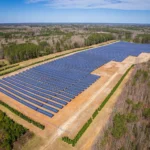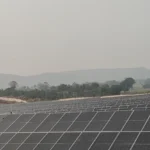Building renewable energy projects, such as wind and solar farms, is among the most effective strategies to address climate change. Amazon, committed to achieving net-zero carbon emissions by 2040 through its Climate Pledge, has emerged as a global leader in renewable energy. For the fifth consecutive year, Amazon is the largest corporate purchaser of renewable energy worldwide, according to Bloomberg NEF. The company has supported over 600 renewable energy projects, which collectively have the capacity to power 8.3 million U.S. homes.
Driving Renewable Energy Adoption Globally
Amazon’s investments in wind and solar projects help match the electricity consumed by its operations while bringing new renewable energy to the grid. By prioritizing regions heavily reliant on carbon-intensive energy, these projects maximize environmental benefits, reduce carbon emissions, and phase out less sustainable energy sources.
To date, Amazon has backed over 40 utility-scale solar and wind farms in countries with high emissions and fossil fuel reliance, including:
- Australia, China, Greece, India, Indonesia, Poland, and South Africa
- U.S. states such as Louisiana and Mississippi
“Amazon isn’t just the top corporate purchaser of solar and wind; we’re prioritizing projects in locations where they can make the biggest impact on reducing emissions and improving local environments,” said Kara Hurst, Amazon’s Chief Sustainability Officer.
Impact of Targeted Renewable Energy Investments
Strategically locating renewable energy projects amplifies their environmental impact. This practice, known as carbon matching, focuses on deploying projects where they can offset the most carbon emissions.
Key Highlights of Amazon’s Renewable Energy Investments:
- India: Amazon has invested in nine utility-scale solar and wind farms, which could avoid 55 times more annual carbon emissions than similar projects in Sweden, one of the world’s most decarbonized grids.
- South Africa: Amazon’s investment in the country’s first renewable energy project that sells power to small consumers is a landmark step. The company also collaborated with the local government to create regulatory structures supporting further renewable energy initiatives.
- Poland: Three utility-scale wind farms are contributing to Poland’s renewable energy goals, helping reduce reliance on coal.
- Greece: Amazon signed agreements for eight renewable energy projects, including three utility-scale wind farms, expected to power more than 300,000 Greek homes.
Accelerating Decarbonization with Global Impact
Amazon’s efforts are aligned with findings from WattTime, an environmental tech nonprofit, which highlights that optimizing the location of renewable energy projects could help the world avoid five gigatons of carbon dioxide.
“While building renewable energy anywhere is positive, prioritizing projects in hard-to-decarbonize regions drives the greatest environmental impact,” said Gavin McCormick, executive director of WattTime. “Amazon’s investments in regions like Poland, South Africa, and India are crucial steps toward slowing climate change.”
Leading the Transition to a Sustainable Future
By combining innovation, targeted investments, and collaboration with local governments, Amazon is setting an example for corporations worldwide. Its renewable energy initiatives are not only reducing emissions but also creating more sustainable and reliable energy grids globally.
Learn more about Amazon’s commitment to sustainability and renewable energy innovation.












